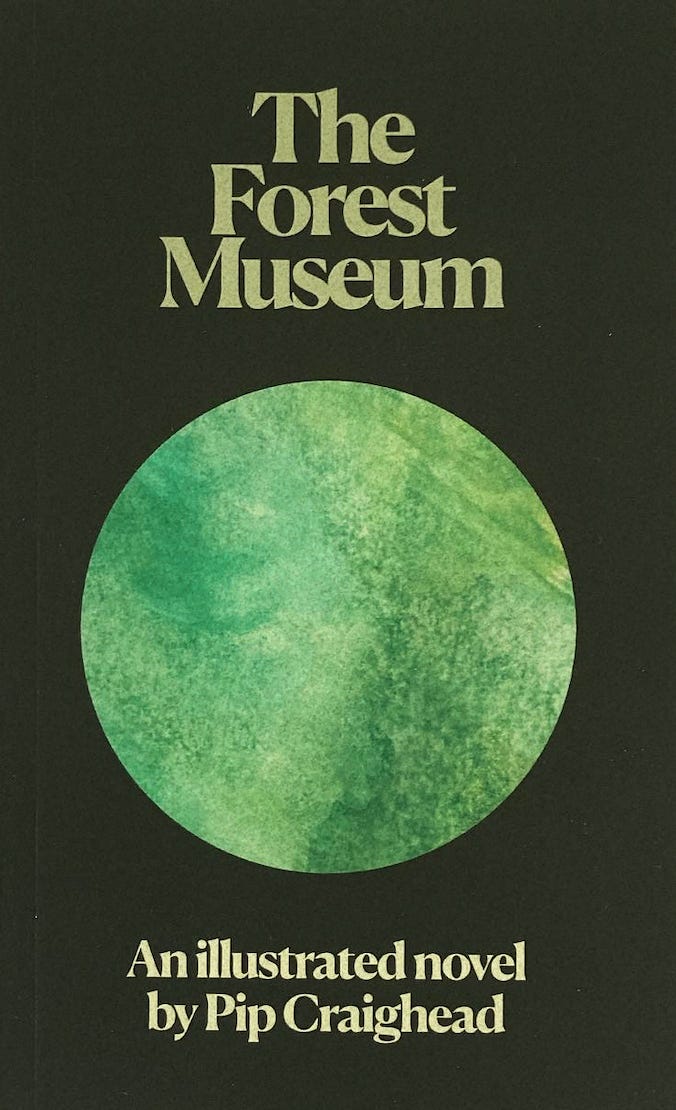Much of what I like in music aspires to this category — see the songs Night School and Water Plants and Slow Motion Blanket Cave.
My first novel, The Forest Museum, was published last year — what an honor! And here, for you, is the first chapter. In its entirety! With an illustration to boot!
1.
In the summer of 1972, Celeste Nascimento — a young painter fresh out of an American art school — was hired to retouch the 18th-century landscape paintings which hung within the hall of a hunting lodge upon a grand estate in Germany’s Black Forest. The estate, the Schloss Fernweh, was once the wilderness retreat of a wealthy Bavarian family with vague, unenumerated ties to royalty. Every day of her stay Celeste was to dutifully work away at restoring the paintings, which depicted dark-eyed stags and bright-eyed rabbits running over vast, rolling hills of finely manicured grass, with walls of geometrically spaced trees looming in the distance.
Two centuries ago, those pictures were painted straight onto the upper half of the walls, and so it was that Celeste found herself often working in physically straining positions, standing on a ladder at odd angles in order to reach particular details. As a result, she could only put in two to three hours of work each day before her neck or arms started to ache fiercely, at which point she would put her tools away and spend the rest of the afternoon exploring the sprawling environs of the country estate.
Celeste had grown up in Patagonia, Arizona, a small town just north of the Mexican border, and as a teenager living in the glare of an unrelenting sun, she had often dreamt of the cool eaves of far-off European forests. Many afternoons she’d hid herself within the air-conditioned microcosm of the town library, gazing wistfully at Time-Life compendiums of Renaissance art and medieval castles, imagining what it would be like to explore those immense tracts of ancient woodland. “Europe,” she would think to herself, “people used to just call it The Continent.” In her mind, she saw fathomless swathes of untrammeled grass sprawling out in sloping curves, and in the distance, ice-capped mountains that reared up into the sky, great shards of sheer-sided stone thrust up from the earth’s inscrutable interior. She envisioned crystalline sunbeams falling upon marble manors, and long corridors of trees forming lush green bowers of leaves that stretched off into the horizon, flanked by colonnades of pale white trunks, and when the wind rose, the leaves would catch the light and throw off shimmering flashes of silver.
So it was with a great sense of relish that Celeste was now here, in the land she’d dreamt of, having graduated from California’s Chouinard Art Institute and found summer work restoring these antiquarian paintings. She did not necessarily feel a sense of connection with the actual Europeans she met; to the contrary, European society made her feel more distinctly aware of her Americanness, in a strange inversion of the way she had felt like a displaced European when among certain Americans in her hometown. But whatever alienation she felt in her encounters with European society, she felt profoundly connected to the European landscape. Somehow nature here felt precisely curated to her, as if every part had been arranged just so, even down to the manner in which fallen branches lay akimbo upon the wet green earth after a storm. It was as if the whole world were the grounds of a vast, nameless estate, or a boundless garden. There was a stillness in the air out here, like that of an enormous outdoor museum.









"My favorite thing about playing Naydak is when you attack me"